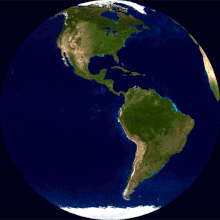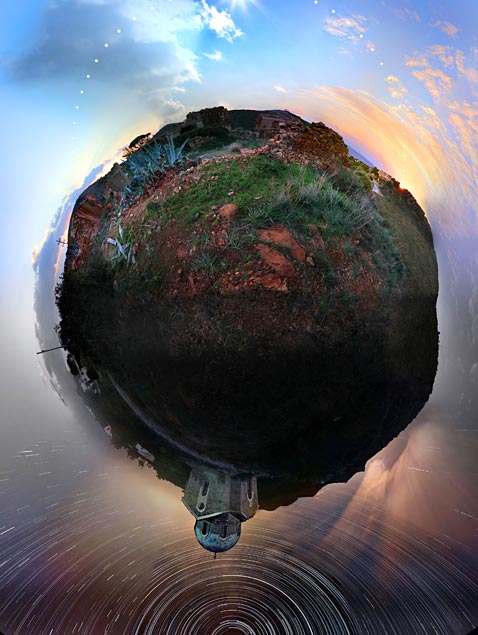Our Earth is a beautiful planet in our solar system. The Earth has a natural satellite. It is the Moon. The Earth and the Moon move around the Sun.

The moon is caught between Earth and the space shuttle Discovery in this photo taken in 1988. This shuttle mission marked the return of U.S. Senator—and pioneering astronaut—John Glenn to space.
picture source from http://science.nationalgeographic.com/science/photos/earth-moon-gallery/#/indian-ocean-space_1005_600x450.jpg

The sun is a star, a hot ball of glowing gases at the heart of our solar system. Its influence extends far beyond the orbits of distant Neptune and Pluto. Without the sun's intense energy and heat, there would be no life on Earth. And though it is special to us, there are billions of stars like our sun scattered across the Milky Way galaxy.
The movement of the Earth
The Earth is constantly spinning on its axis. The spinning motion of the Earth on its axis is called rotation. The axis is an imaginary line through the Earth linking the North and the South poles. The Earth takes 24 hours to complete a full rotation on its axis.

The Earth rotates from the west to the east. So, the Sun rises in the east and sets in the west. As the Earth spins about its own axis, it also moves around the Sun. The Earth moves around the Sun in a fixed path known as the orbit.
http://www.youtube.com/watch?v=lkWyM-M8o0c&feature=player_detailpage
It takes the Earth one year to make a complete journey around the Sun.
The movement of the Moon
The Moon is the Earth's only natural satellite. Like the Earth, the Moon also rotates on its axis.
Video source from youtube http://www.youtube.com/watch?v=Nx8lfcrxw6s
Although we see the Moon all the time, many of us do not take time to consider our planet’s only satellite. The Moon is the fifth largest satellite in our Solar System. Considering Jupiter alone has 63 moons, this is pretty impressive. The Moon is the closest celestial object to Earth and apart from the Sun is the brightest object in the sky.
Its gravity is only about 17% of the Earth’s gravity. Since the Moon has very little atmosphere, its temperature varies radically from -153°C to 107°C on average. However, temperatures as low as -249°C have been recorded. The Moon is fairly large for a satellite, but it is quite a bit smaller than our own planet. Its diameter is one-fourth the diameter of Earth, but its mass is only 1.2% of the Earth’s mass. Its density is surprisingly low, with the satellite having only roughly half the density of Earth.
Because the Moon is in synchronous orbit with Earth, one side faces our planet at all times. The most we have been able to see directly is 59% of the Moon due to small changes in the orbit. We were unable to see the other side of the Moon until probes were able to photograph it. Although the far side of the Moon is often called the dark side of the Moon that is inaccurate. The far side of the Moon actually receives as much lights as the near side of the Moon does.
You may not know it, but there is water ice on the Moon. The water ice is located in large reservoirs at both poles of the planet where it is hidden from the Sun in deep craters. The water would not be able to exist in liquid form on the satellite because the Moon has no atmosphere to hold the water on the surface.
Read more: http://www.universetoday.com/19424/the-moon/#ixzz2CtaHzj7J
The amazing day and night in one picture
Day and night happens because the Earth rotates on its axis.

Photographer Stephen Wilkes creates remarkable images of night and day at once by setting up his camera to take pictures of a single scene over and over for 15 hours. He then blends the images to get this time-defying effect…

The parts of the world that are in daylight get warmer while the parts that are dark gradually lose the heat they absorbed during the day.

As the Earth rotates, different sides of the Earth face towards the Sun or face away from the Sun.

The Earth's relationship with the sun also creates seasons.

As the Earth spins on its axis, parts of the planet are in the sun while others are in the shade. In other words, the sun appears to rise and set.



The phases of the Moon
The Moon is the Earth's only natural satellite.
The Moon does not give out light.
It appears as a bright object in the sky at night because it reflects light from the Sun.
If the Moon is observed every night, one can see taht:
-the Moon rises at different times each night.
-the shape of the moon appears to change.
This happens because as the Moon travels in its orbit, the Sun shines on different parts of the Moon.
This makes the appear to change its shape each night.
The different shapes of the Moon we see as it orbits the Earth are known as the phases of the Moon.

A full moon is the lunar phase seen when the whole of the Moon's lit side is facing Earth. This phase happens when Earth is between the Moon and the Sun. About one week later, the Moon enters the quarter-moon phase. At this point, the Moon appears as a half-circle, since only half of the Moon's lit surface is visible from Earth. When the Moon moves between Earth and the Sun, the side facing Earth is completely dark. This is called the new moon phase, and we do not usually see the Moon at this point. Sometimes you can just barely make out the outline of the new moon in the sky. This is because some sunlight reflects off the Earth and hits the moon. Before and after the quarter-moon phases are the gibbous and crescent phases. During the gibbous moon phase, the moon is more than half lit but not full. During the crescent moon phase, the moon is less than half lit and is seen as only a sliver or crescent shape.
It takes about 29.5 days for the Moon to revolve around Earth and go through all the phases.



No comments:
Post a Comment